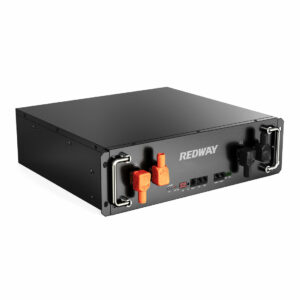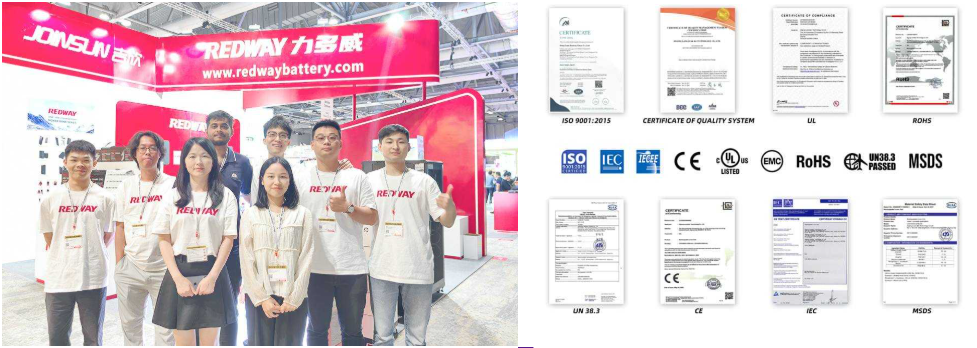What Types of Batteries Are Used in the Telecom Industry?
The telecommunications industry relies heavily on various types of batteries to ensure uninterrupted service and reliable backup power. Common battery types include Valve Regulated Lead Acid (VRLA) and lithium-ion batteries, each offering unique advantages and applications tailored to the specific needs of telecom infrastructure.
What Types of Batteries Are Commonly Used in the Telecom Industry?
In the telecom industry, several battery types are utilized to provide backup power and support critical infrastructure:
- VRLA Batteries: These are the most widely used batteries in telecom applications due to their maintenance-free operation and reliability.
- Lithium-Ion Batteries: Gaining popularity for their longer lifespan and efficiency, lithium-ion batteries are increasingly being adopted in telecom systems.
- Nickel-Cadmium (NiCd) Batteries: While less common today, NiCd batteries are still used in some applications due to their durability and performance under extreme conditions.
| Battery Type | Key Characteristics |
|---|---|
| VRLA | Maintenance-free, safe for indoor use |
| Lithium-Ion | Long lifespan, fast charging capabilities |
| Nickel-Cadmium | Durable, performs well in extreme conditions |
How Do VRLA Batteries Function in Telecom Applications?

VRLA batteries utilize a sealed design that prevents gas emissions during normal operation. This makes them ideal for indoor installations where ventilation may be limited. The immobilized electrolyte allows for efficient energy storage and minimizes maintenance needs, making them a reliable choice for telecom systems.
| Feature | Description |
|---|---|
| Sealed Design | Prevents gas emissions |
| Low Maintenance | No need for regular watering |
| Safe for Indoor Use | Ideal for environments with limited ventilation |
What Advantages Do Lithium-Ion Batteries Offer for Telecommunications?
Lithium-ion batteries provide several advantages that make them appealing for telecom applications:
- Longer Lifespan: They typically last between 10-15 years compared to 3-5 years for lead-acid options.
- Higher Energy Density: This allows for more energy storage in a smaller footprint, which is crucial for space-constrained installations.
- Faster Charging Times: Lithium-ion batteries can be charged much quicker than traditional lead-acid batteries, reducing downtime.
| Advantage | Lithium-Ion Batteries | Lead-Acid Batteries |
|---|---|---|
| Lifespan | 10-15 years | 3-5 years |
| Energy Density | Higher | Lower |
| Charging Time | Faster | Slower |
Why Are Backup Power Solutions Critical for Telecom Infrastructure?
Backup power solutions are essential in telecommunications due to the need for continuous service availability. Power outages can disrupt communication services, leading to significant losses and customer dissatisfaction. Reliable battery systems ensure that critical infrastructure remains operational during power interruptions.
| Importance | Description |
|---|---|
| Continuous Service | Prevents disruptions during outages |
| Customer Satisfaction | Maintains trust and reliability |
Know more:
Innovations and Trends in Telecom Battery Technology
What Types of Batteries Are Used in the Telecom Industry?
What Are the Main Trends Shaping the Battery Industry in 2025?
What Are Two Recent Innovations in Lithium Battery Technology?
What Is the Latest Technology in Battery Development?
How Long Do Different Types of Telecom Batteries Last?
The lifespan of telecom batteries varies significantly based on type:
- VRLA Batteries: Typically last 3-5 years with proper maintenance.
- Lithium-Ion Batteries: Can last up to 10-15 years, making them a more cost-effective option over time.
- Nickel-Cadmium Batteries: Known for their durability but generally last around 5-7 years.
| Battery Type | Average Lifespan |
|---|---|
| VRLA | 3-5 years |
| Lithium-Ion | 10-15 years |
| Nickel-Cadmium | 5-7 years |
Expert Insight
“Choosing the right battery type is crucial for ensuring reliable telecommunications,” states an expert from Energy Solutions Group. “With advancements in battery technology, lithium-ion options are becoming more viable, offering longer lifespans and lower maintenance needs compared to traditional lead-acid batteries.”
Conclusion
The telecommunications industry relies on various battery types, including VRLA and lithium-ion batteries, to maintain reliable service and backup power solutions. Understanding the characteristics and advantages of these batteries is essential for making informed decisions about energy storage systems within this critical sector.
News
1. Sodium-Ion Batteries for Cost-Effective Telecom Backup
The telecom industry is increasingly adopting sodium-ion batteries as a sustainable alternative to lithium, offering comparable performance at lower costs, especially for large-scale backup power systems.
2. Graphene-Enhanced Lead-Carbon Batteries for Long-Duration Backup
New lead-carbon batteries with graphene additives provide extended cycle life and faster charging, making them ideal for telecom towers requiring reliable, low-maintenance energy storage.
3. Flow Batteries for Grid-Connected Telecom Hubs
Vanadium redox flow batteries are being deployed in major telecom hubs for their ability to provide ultra-long-duration backup power, supporting critical infrastructure during prolonged outages.
FAQ Section
- What types of batteries are used in the telecom industry?
The most common types include VRLA batteries, lithium-ion batteries, and nickel-cadmium batteries. - How long do VRLA batteries typically last?
VRLA batteries usually last between 3 to 5 years with proper maintenance. - What advantages do lithium-ion batteries have over lead-acid?
Lithium-ion batteries offer longer lifespans, higher energy density, and faster charging times compared to lead-acid options. - Why are backup power solutions important for telecom?
They ensure continuous service availability during power outages, preventing disruptions and maintaining customer satisfaction.
What Are Telecom Industry Backup Power Battery Types?
Common types include lead-acid, nickel-cadmium (NiCd), and lithium-ion. Lead-acid is cost-effective but bulkier. NiCd handles extreme temperatures better. Lithium-ion offers higher energy density, longer lifespan, and faster charging. Hybrid systems combining lithium-ion with supercapacitors are emerging for critical telecom sites needing rapid response.
Why Use Lithium-Ion Batteries In Telecom Tower Applications?
Lithium-ion batteries provide compact size, lightweight design, and 2-3x longer lifespan than lead-acid. They support high energy demands of 5G networks, tolerate frequent charging cycles, and reduce maintenance costs. Their temperature resilience (-20°C to 60°C) suits outdoor telecom towers. Remote monitoring capabilities enhance reliability for uninterrupted backup power.
Lead-Acid Vs Nickel-Cadmium: Which Is Better For Telecom Infrastructure?
Lead-acid is cheaper upfront but requires regular maintenance and has shorter life (5-7 years). Nickel-cadmium excels in extreme temperatures (-40°C to 50°C) and offers 15-20 years lifespan, but higher initial cost and environmental concerns. Lithium-ion now outperforms both in efficiency but at a premium. Site-specific needs dictate optimal choice.
How To Design Energy Storage For 5G Network Power Needs?
5G demands high-capacity, fast-response systems. Use lithium-ion batteries with modular scalability (48V/53V systems) for dense small-cell deployments. Integrate smart management systems for real-time load balancing. Hybrid solutions (battery + fuel cells) ensure redundancy. Prioritize batteries with 10+ year lifespans and rapid recharge to handle frequent power cycling.
What Are Maintenance Strategies For Telecom Backup Batteries?
Conduct quarterly voltage checks, annual capacity testing, and terminal cleaning. Use IoT-based remote monitoring for temperature, charge cycles, and state-of-health. Replace lead-acid batteries at 80% capacity loss, lithium-ion at 70%. Store batteries in ventilated, temperature-controlled environments. Proactive thermal imaging detects early faults. Schedule replacements before monsoon/peak seasons.
How To Implement Sustainable Battery Recycling In Telecom?
Partner with certified recyclers for lead recovery (95% recyclable) and lithium-ion material extraction. Follow ISO 14001 standards. Deploy battery passport systems for traceability. Incentivize take-back programs with vendors. Opt for refurbished batteries where feasible. Invest in closed-loop recycling tech to reuse cobalt, nickel, and lithium in new telecom batteries.



